How to Sing Stronger and Project Your Voice
Singers who are weak and cannot project their voices usually sing with a very breathy tone quality as well. Sometimes this is due to general timidity about being heard. I try to convince these timid souls that projecting the voice is a good thing in singing, and that to be convincing and portray any kind of emotional range, dynamics in singing, including forte or loud singing, are imperative.
If we think about the sound a baby makes when they cry: “waaaaaaaaaaaah”- this is a sound that can be heard throughout the house, and yet it is created by a tiny being with very tiny vocal cords and small bodily resonating cavities. Why is the sound so powerful? And have you ever wondered why babies first vocalize on the [ae] (as in “at”) vowel? Well, maybe Nature had a plan….the {ae} vowel really works!
I love the [ae] “at” sound because this vowel is an open, or wide vowel that encourages vocal cord adduction and thus creates a louder sound. Singers who produce airy, breathy and weak tones have not learned to appropriately adduct, or bring together, their vocal cords. This is also known as vocal cord approximation. When the vocal cords are appropriately adducted (that is, not too much and not too little), the resulting sound is strong and clear.
The vocal cords create pitch, and the vocal tract is what creates resonance or tone color, by amplifying the sound waves after they leave the vocal cords.
When we are singing a pitch, the cords open and close in a cyclic way. The longer the vocal cords (also known as “the glottis”) stay closed in this cycle of open and closed, the stronger the sound will be, due to an increase in subglottal air pressure in the closed phase. This is known as “closed quotient”. When the glottis is closed, the vocal tract becomes a much more efficient resonator, and the higher frequencies of the sound are boosted to the area known as the “singer’s formant”, or the ring or more piercing quality in the voice that enables it to be heard over a loud orchestra or rock band. This “singer’s formant” is a boost of energy that occurs between 2800 and 3400 Hz and is developed through vocal training and is not present in untrained singers. A greater degree of “closed quotient” is also the result of good vocal training.
Volume and projection should not be confused with pressure; pressure is not power! Instead, we can create more volume and projection by the proper use of resonance, which can be developed by the use of the “witchy” “bratty” or “voce di strega” pharyngeal exercises such as the bratty nay, which develop the “Singer’s Formant”.
A really important component to this is to make sure that your voice in anchored in the chest or lower register. You MUST adduct your vocal cords properly in the chest to being with, and just as important, you must know when to RELEASE or start to transition out of that chest coordination in order to maintain a connected sound that is not strained. This concept is known as “bridging”.
To initiate the closure of the glottis, we use a gentle version of the “coup de glotte” technique that was an integral part of the teaching methodology known as Bel Canto. I call this the adducted onset. It’s actually the way we speak in English when we say, for example, “I eat my apple”, (adducted onset) rather than “I heat my happle” (aspirated onset).
To experience the adducted onset, pretend you just heard some bad news, and say “UH-OH” with a clear tone. On the beginning of each of those words, the vocal cords come together cleanly, so there is no leakage of air through the vocal cords. Now pretend you smell something really good cooking in the oven, and say MMM-MMM-MMM. Again the vocal cords adduct and there should be no leakage of air. For a more extreme example, stick out your tongue and say AA-AA-AA (as in the word “at”). In the upper register, try this on EE-EE-EE. That would be [i] in IPA. If done gently, without too much air blast, the adducted onset is a valuable tool in creating better vocal cord approximation, and thus greater power, projection, and volume in the singer’s voice.
For professional singing lessons in the Atlanta, Marietta and Alpharetta GA area, or to register for voice training online by skype, facetime, or speakerphone, please visit the website at www.singlikeastar.com, and click on the GET STARTED tab to register for a professional vocal evaluation and consultation.


